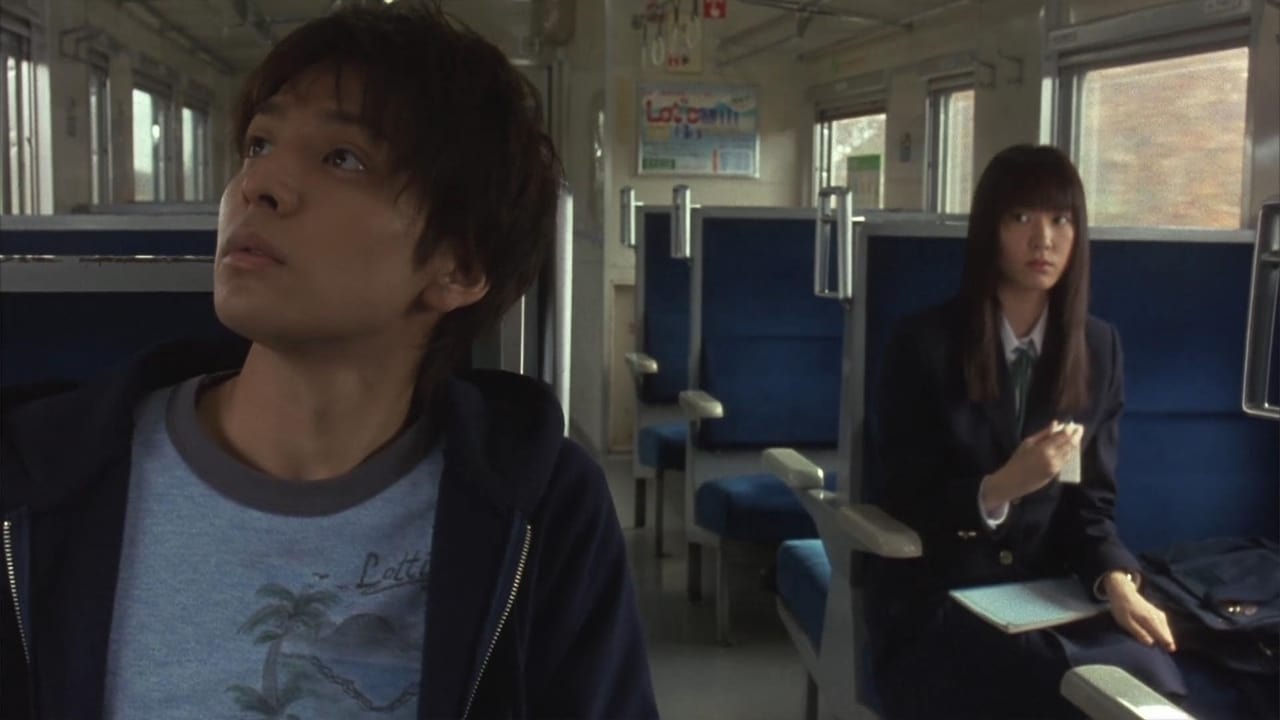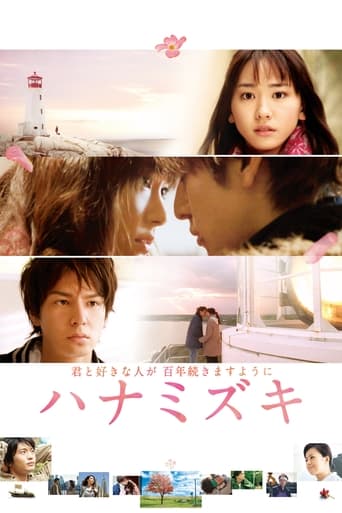

The overall of this movie is really good. You can really get into the movie and can even feel it. The story is quite smooth and make sense. The location they selected was quite nice especially the light house of both in Hokkaido,Japan and Canada. But the very disappointed scene for me is the ending. I saw others review and I think most of them feel the same as mine. The ending scene is too rough just Sae and Kohae stand in front of each other and say "Okaeri" and "Tadaima" Which mean "Welcome back home" and "I'm back" the meaning of this is OK but after this I expect to see some romantic scene such as hug. Because the ending is just they stare at each other and end. Few more things that need to be improved is to make some scene more emotional. To let the audience get into more of the characters. Others than that, I love this movie!!
... View More'Impulsive' is a word that is thrown frequently about in this romantic drama, presumably aimed towards a teenage/young adult audience, especially since themes of teenage angst and jealousy crop up within the narrative. Ironically, many who use this particular term prove to be the most impulsive of all. Kouhei Kiuichi (Toma Ikuta) is one such individual who fits this description: a young fisherman, who is spontaneously abrupt. The film begins with him as an adolescent, who, by chance encounter, meets Sae Hirasawa (Yui Aragaki). Sae is far more adept at study, wishing to eventually leave the fishing town they occupy for Tokyo, while Kouhei's future is already predetermined - he's going to inherit the fishing business his family has been committed to for several generations.Though Kouhei's father, Kenjiro (Yutaka Matsushige), has a massive role in his life's decisions, Sae's father is little more than a memory, having spent much of his life in Canada, the country where Sae was born, before she and her mother, Ryoko (Hiroko Yakushimaru) moved to Tokyo. Her father however returned briefly, only upon discovering he was ill, so he might spend his last remaining time with her. Though Sae feels Japan is her home, she has often dreamed of traveling to where she was born, her dreams existing far outside the reaches of the fishing town she originally occupies at the film's beginning, while Kouhei's dreams do not.Though the two leads are able to find a romantic connection together, Sae's dedication to her study sends her on a journey to Tokyo, with the blessing of her mother. Kouhei on the other hand drops out of high-school to pursue life as a fisherman, working alongside many of his friends, including Ritsuko (Misako Renbutsu), a young woman with a crush on him. Although a long distance relationship is successfully orchestrated, it is not without its pressures, its problems, and its temptations, resulting in the question: can these two characters really remain as one? Set over the course of many years, from adolescence, into young adulthood, the film efficiently articulates how life has a way of happening, while we, who live it, simply travel along for the ride.The imagery is especially startling: scenes depicting oceans, horizons and floral beauty are exceptionally captured, one of the most memorable scenes depicting Sae beside a lighthouse in Canada. The beauty of the world is potentially accentuated by Junichi Kitami (Osamu Mukai), a photographer whose images occasionally grace the screen.The contrasts between the scenes in Japan, and those in America and Canada are very astounding to behold, however, as a slight criticism, the American characters in the feature appear too nice. Don't get me wrong, almost all of the Americans I've met have been plenty nice, however these characters seem unnaturally so, as though they are the impromptu interpretation the writers had of how Americans are, their formality and respectfulness having being based upon Japanese culture.Imagery aside, the song the film is based upon, Hanamizuki from You Hitoto, is especially brilliant, while the soundtrack that accompanies many of the scenes is equally astounding, the melody sweeping viewers along. However, it's during the scenes, that experience the track's absence, where the intensity of the drama is effectively played out.The acting, across the board, exceptionally allows audiences to believe in each of the character's, who appear incredibly realistic, Ms. Aragaki's credible English deserving mentioning. One of the best aspects of the film is the tone and duration, the narrative never feeling forced, or out of place, there being a number of great scenes when the audience will undoubtedly hold their breath in preparation for what happens. Much like the small ornamental boat, which is passed back and forth between the leads over the course of the feature, we hope they will find their way back into each others hearts one day.
... View MoreThere are many reasons why Hanamizuki is considered a must-see film. 1. It is directed by Nobuhiro Doi, director of great romance films and series such as Be With You and Nada Sou Sou. 2. It is starred by Ikuta Toma, Aragaki Yui, and Mukai Osamu. OMG!!! >0< 3. It is based on the most beautiful song of the same name by Hitoto You. ... and so on.I almost screamed out of joy when knowing that it would be released in Thailand at Apex and House cinemas and managed to get some tickets to the Thailand film premiere at last.Hanamizuki tells a tear-jerking love story similar to Be With You and Nada Sou Sou (but not as much tear-jerking as the two Doi's previous films). The film is sad, but I found it encouraging rather than depressing. Kind of encouraging people to be true to love. Toma, Gakky, and Osamu have all delivered such great performances. So talented and natural as they are, fans will not be disappointed. The scenery in the film were also very well-chosen. On the other hand, the plot of the film is a bit too 'soap opera' and has pulled down the film somewhat, pity.All in all, the film is definitely worth watching for the brilliant Toma & Gakky, just don't expect too much of the plot. ^^*Notice* Please continue watching the end credits to see various nice pics.
... View MoreThe lines seems to have been drawn in genre terms in contemporary Japanese cinema. Many are attracted by the package of young starlets and hit pop music. Others are repelled by the heavy-handed plot contrivances and schmaltzy dialogue. You make your choice and either pay up or walk away.Two young lovers 'meet cute' on the train, but find educational, social and class differences pulling them apart as time goes on.My foot is firmly in the latter camp, but I can't help feeling the lightweight scripts and low-key catharsis are a shame, as there is much to admire in Hanamizuki, namely the performances by the two leads. Yui Aregaki (Sae) gives a reigned-in performance as the ambitious girl from small-town Hokkaido, her admirable restraint hinting at greater strength and complexity. Tôma Ikuta as Kohei finds family and social circumstances pile against his chances of walking his own path, or more pertinently walking a path with Sae. Ikuta is charismatic and looks like he could hold his own if given stronger fare to work with.As it is, sappy sentimentality and lazy coincidences once again pile up to sink a J-film. Why are people always just 'turning up' in these films? Sae's Mum turns up at her apartment in NYC. Sae herself 'turns up' at a hometown wedding. She turns up again at the lighthouse Kohei is visiting. Kohei turns up in the Canadian town Sae was born in on the EXACT day she chooses to visit. Would a little cause-and-effect be unwelcome? Even at the end, Sae just turns up, and eventually, so does Kohei. Not even a cuddle. Go figure.There is a demographic for this film and I am clearly not in it, but neither are the vast majority of overseas audiences, and that is ultimately damaging. Japanese society in many areas is developing a Galapagos phenomenon, the notion of separate evolution. For a cinema that used to produce to universal acclaim, that is a tragedy.
... View More